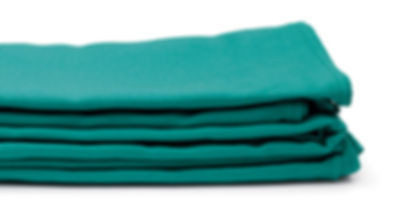
The sustainable alternative for the operating room

PHARMA
CEUTICAL

AGRO FOOD

COS
METHICS

Environmental cleaning
Physical contamination
Pollution control and air quality in controlled areas is a key element to positively influence the process and quality of a product.
In some sectors, such as food, the contamination of food by microbiological agents is even a public health problem.
There are different types of contamination and the most frequent is produced by particles and foreign bodies that are distributed in the environment and reach the product during handling_cc781905-5cde- 3194-bb3b-136bad5cf58d_ (particles of skin scales generated by people, hair, etc.)
There are currently technical fabrics specially designed to effectively reduce this type of contamination: clean air fabrics and particle barriers.
All our fabrics comply with ISO 5 – GMP class A/B quality requirements.



Main Benefits for the
USER
Great comfort: Lightness and breathability
Temperature control
Particle filtration
Ideal even for long time use
Microbial barrier
Hergonomic design: total freedom of movement
resistant and elegant
Keeps its shape after washing
Main Benefits for the COMPANY
At Technotex we have developed a complete range of garments designed for each industry: agri-food (meat, chocolate, refrigerated...), cosmetics, pharmaceuticals, etc.
We offer safety and cost savings:
The use of adequate clothing contributes to greater environmental cleanliness and an effective reduction of the risk of physical and biological contamination.
Reduce and prevent contamination
Helps keep products in good condition for longer
They are very resistant fabrics that offer rapid amortization and savings on purchases
Orientative Product Catalog
Suspended particles in the environment are a transport vehicle for bacteria. We can reduce them significantly by using clean air technical fabrics that do not emit lint .
A healthy individual can disperse approximately 5,000 human skin flakes into the air per minute. These scales are often carriers of microorganisms and bacteria. Personnel who work inside, or enter areas where food/products are exposed and/or in the process of being handled, should wear suitable work clothes with clean textiles and a barrier to this type of particles.
Each type of product requires a different degree of environmental cleanliness to minimize the risk of contamination. In order to achieve the proper degree of operation, these zones must be designed to achieve certain specified levels of air cleanliness.
Work clothes should not have buttons or pockets facing outwards above the waist level and the use of closures on sleeves and ankles is highly recommended to avoid contamination by particles from the user from the inside of the clothing to the outside.
Work clothes must be washed according to the rules and frequency appropriate for the intended use, and suitable areas must be set up for the personnel (changing rooms, sinks, bathrooms, etc.).
We recommend avoiding the use of cotton or polyester/cotton textiles. These traditional textiles release fibers and lint and do not act as a filter or barrier to microorganisms that are dispersed by people in their movements.
Regulations that must been followed
There are several applicable regulations and biosafety measures in the production area, among the most prominent:
-
Regulations (EC) No. 852, 853 and 854/2004 of the European Parliament and of the Council.
-
Law 17/2011 Food security and nutrition. Relating to the hygiene of food products, they describe the importance of clean and adequate clothing.
-
BSI PAS 220 2008, issued by the British Standards Institution, which defines the requirements and protocols for food safety management systems designed according to ISO 22000.7 / 2005.
In all of them, the importance of adequate clothing according to the level of environmental risk, which is clean and in good condition, is described.
PRODUCTO | ESTADO | NIVEL SANITARIO - RIESGO | NIVEL DE RESPONSABILIDAD |
|---|---|---|---|
Ahumados/Productos tratados | ALTO | ALTO | |
Productos congelados | MUY ALTO | MUY ALTO | |
Envasado | ALTO | ALTO | |
Tratado | ALTO | MUY ALTO | |
Leche y productos lácteos | Fresco | ALTO | MUY ALTO |
Envasado | ALTO | ALTO | |
Fileteado | MUY ALTO | MUY ALTO | |
Pescado y derivados | Vivo/Fresco | MUY ALTO | MUY ALTO |
envasado | ALTO | ALTO | |
Picada | MUY ALTO | MUY ALTO | |
Carne y Producto cárnicos | Fresco | MUY ALTO | MUY ALTO |
Tratado | Alto | ALTO | |
Frutas y verduras
| Fresco | Bajo | ALTO |